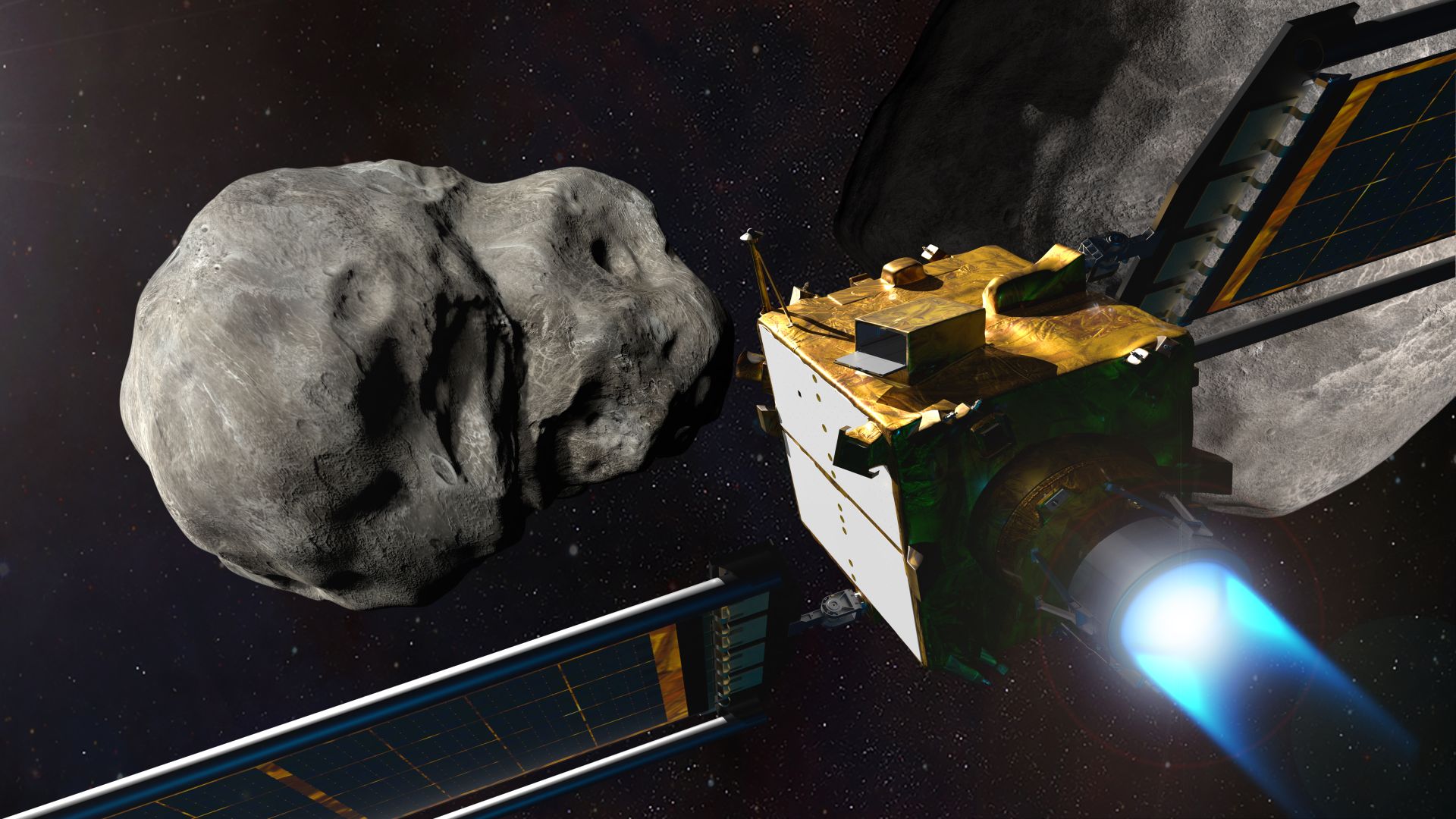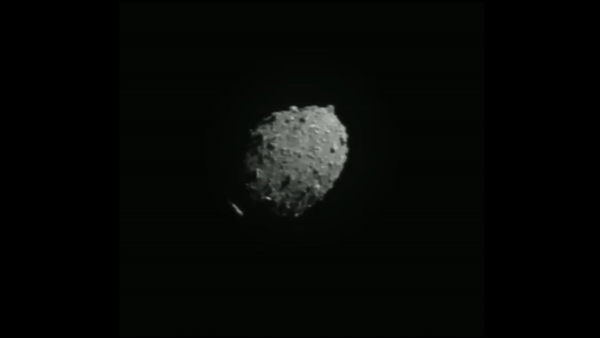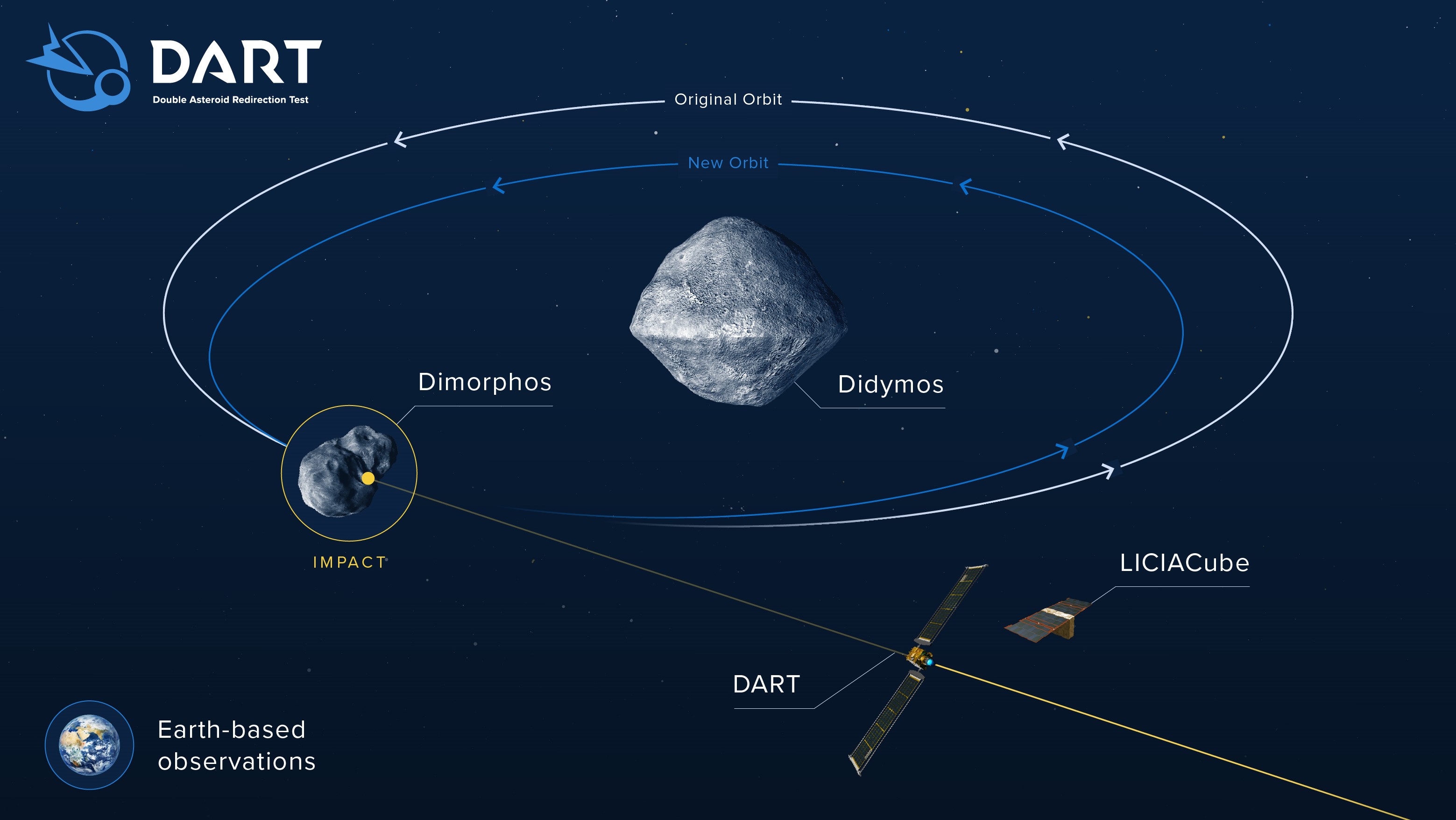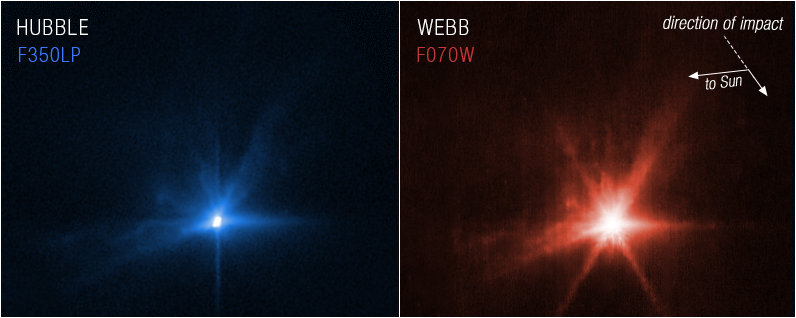James Webb Space Telescope captured NASA's asteroid-smashing mission!
NASA's DART spacecraft impacted with an asteroid and the James Webb Space Telescope witnessed it go out with a bang

Last November, NASA tasked its Double Asteroid Redirection Test (DART) spacecraft to embark on an asteroid-smashing mission, and on September 26, 2022, it successfully crashed into the small asteroid known as Dimorphos, obliterating it.
While the spacecraft may be no more, the images of its collision both before, during, and after the act was captured by not only the spacecraft itself, but the James Webb Space Telescope (JWST), and the Hubble Space Telescope's camera too!
• These are the best telescopes for astrophotography.
The Double Asteroid Redirection Test (DART) mission was initially designed to test a kinetic impact, as well as being a unique NASA experiment to intentionally smash a spacecraft into a small asteroid, in the world’s first-ever in-space test for planetary defense against near-earth asteroids, or comet hazards.
Known as the "kinetic impactor" technique, it involves scientifically slamming a heavy and fast-moving object into an asteroid, which in this case was the unmanned DART spacecraft, that was equipped with only a single instrument - the Didymos Reconnaissance and Asteroid Camera for Optical Navigation (DRACO).
Both the James Webb Space Telescope (JWST) and The Hubble Space Telescope (HST) captured the events of the Dimorphos moonlet asteroid collision with the DART spacecraft, being the very first time that both telescopes have observed the same celestial target at the same time, according to NASA.
The DART mission was launched almost a year ago in the late night of November 23, 2021, and early morning of November 24, 2021, depending on where you live. DART's main camera, the DRACO, supposedly captured and sent an image to Earth for every second until its final moments as the spacecraft was presumed to have crashed with the feed going black.
The best camera deals, reviews, product advice, and unmissable photography news, direct to your inbox!
Aside from capturing and transmitting images, the DRACO was also responsible for helping to steer the spacecraft singlehandedly on a path of collision with Dimorphos. This is a pretty impressive feat, considering that (as reported by Space.com) the DRACO could only just spot the asteroid an hour and thirty minutes before impact.
The DART spacecraft deliberately impacted Dimorphos at speeds that reached 4.1 miles per second (6.6 km/s), in an attempt to change Dimorphos's orbit path around the much larger asteroid, Didymos, which measures 780 meters!
Photos captured from the spacecraft during its final moments have revealed stunning details of Dimorphos, the small target asteroid which situates in the double-asteroid system of a larger asteroid, Didymos. The JWST and HST captured the impact in different light wavelengths, Webb in infrared using its Near-Infrared Camera (NIRCam), and Images from Hubble’s Wide Field Camera 3 show the impact in visible light.
The different wavelength observations should reveal details about particle distribution sizes within the expanding dust cloud, helping to determine whether the collision dispersed lots of big chunks or mostly fine dust debris into space. The JWST is said to have observed the impact over a total of five hours, capturing 10 images, and the HST captured intervals of 22 minutes, 5 hours, and 8.2 hours after impact.
NASA Administrator Bill Nelson shares that: "For the first time, Webb and Hubble have simultaneously captured imagery from the same target in the cosmos: an asteroid that was impacted by a spacecraft after a seven-million-mile journey. All of humanity eagerly awaits the discoveries to come from Webb, Hubble, and our ground-based telescopes – about the DART mission and beyond.”
The moonlet (Dimorphos) had never been seen in this way before, with the DART camera revealing it as covered in uneven terrain with multiple boulders, a strange new world. While the relatively small potato-shaped asteroid posed no threat to our world, scientists at NASA hoped to mimic what could be done and how we might prepare for the unlikely event of if a dangerous asteroid were ever headed towards the Earth.
DART is just one part of a much larger planetary defense plan and strategy that is being led by NASA's Planetary Defence Coordination Office, according to Nancy Chabot, project scientist on the DART mission and planetary scientist at the Johns Hopkins Applied Physics Laboratory (APL).
You might also want to take a look at the best deep-space telescopes, and the best cameras for astrophotography, as well as the best lenses for astrophotography. Don't forget the best star tracker camera mounts for astrophotography.

Beth kicked off her journalistic career as a staff writer here at Digital Camera World, but has since moved over to our sister site Creative Bloq, where she covers all things tech, gaming, photography, and 3D printing. With a degree in Music Journalism and a Master's degree in Photography, Beth knows a thing or two about cameras – and you'll most likely find her photographing local gigs under the alias Bethshootsbands. She also dabbles in cosplay photography, bringing comic book fantasies to life, and uses a Canon 5DS and Sony A7III as her go-to setup.




